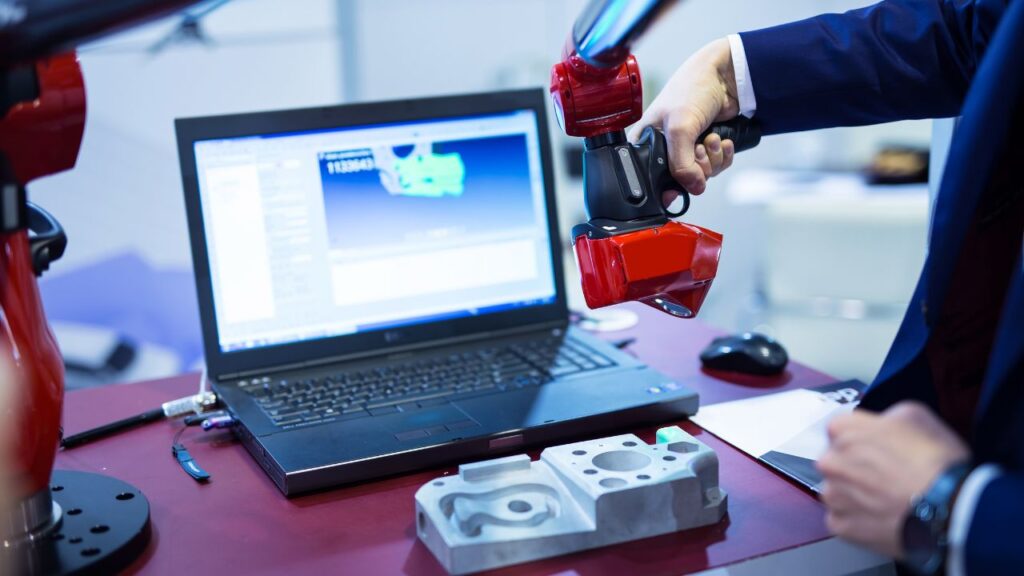Have you ever wondered how video game characters look so realistic or how doctors create perfect prosthetics? The answer lies in 3D scanning technology. 3D scanning captures the exact shape, size, and texture of real objects and turns them into digital models that computers can use.
This technology has become much easier to use and more affordable in recent years. People in many different jobs now use 3D scanning to solve problems and create better products. Game developers use it to make realistic characters. Doctors use it to create custom medical devices. Even regular people can now buy simple 3D scanners for their hobbies.
Understanding how 3D scanning works opens up many possibilities. Whether someone wants to preserve family heirlooms, create art, or start a business, this technology can help. The basics are simpler than most people think, and the benefits reach far beyond what many expect.
What Makes 3D Scanning Technology Work?
3D scanning captures real objects and turns them into digital models using light, lasers, or cameras. The technology measures distances and angles to create detailed three-dimensional data that computers can use.
What Is 3D Scanning?
3D scanning is a non-contact technology that captures the shape and size of real-world objects. The process creates digital copies without touching or damaging the original item.
A 3D scanner works like a digital camera, but instead of taking flat pictures, it records depth information. This data shows how far away each point on an object sits from the scanner.
The scanner collects thousands of measurement points in seconds. These points form a point cloud that shows the object’s exact shape in three dimensions.
People use 3D scanning in many fields. Doctors scan body parts for medical devices. Car makers scan vehicles for design work. Museums scan artifacts to keep digital records.
How 3D Scanning Works?
Most 3D scanners use light-based measurement to capture objects. They send out light beams and measure how long the light takes to bounce back.
Laser scanners shoot thin laser lines across objects. The scanner watches how these lines bend and curve around the object’s surface. This bending tells the scanner about bumps, holes, and edges.
Structured light scanners project patterns of light onto objects. A camera watches how these patterns change shape when they hit the object. The changes reveal the object’s form.
Photogrammetry uses regular cameras to take many photos from different angles. Computer software finds matching points between photos and calculates distances.
The scanner’s computer turns all these measurements into a 3D mesh. This mesh is like a digital skin that covers the object’s shape. Users can then edit, measure, or 3D print from this digital model.
What Are the Different Types of 3D Scanners?
Handheld scanners are portable devices that users move around objects. They work well for medium-sized items like car parts or sculptures. These scanners give users freedom to capture hard-to-reach areas.
Desktop scanners sit on tables and scan smaller objects placed inside them. They provide very accurate results for jewelry, coins, or small mechanical parts. The enclosed design controls lighting for better scans.
Terrestrial scanners are large, tripod-mounted devices for big projects. Construction teams use them to scan entire buildings or job sites. They can capture spaces up to several hundred feet away.
Drone-mounted scanners attach to flying drones for aerial scanning. They map large outdoor areas like forests, mines, or construction sites from above. This method reaches places that are dangerous or impossible to access on foot.
Industrial scanners are built for factory use and can handle tough environments. They scan parts on assembly lines or check product quality automatically.
What Benefits Does 3D Scanning Bring to Different Industries?
3D scanning technology captures real world objects and turns them into digital models that businesses can use for many purposes. This technology saves time and money while making work more accurate across many different fields.
Where Do Industries Use 3D Scanning?
Manufacturing companies use 3D scanning to check if products match their designs. They scan parts to find problems before products reach customers. This helps them fix issues early and save money.
Healthcare professionals scan body parts to make custom prosthetics and implants. Doctors use scans to plan surgeries and create models of organs. This helps them practice difficult procedures before working on real patients.
Architecture and construction teams scan buildings to create accurate blueprints. They use scans to track progress on job sites and spot problems early. Old buildings get scanned to preserve their history in digital form.
Entertainment studios scan actors and objects to create realistic computer graphics. Video game makers use scans to build detailed characters and environments. This makes movies and games look more real.
What Advantages Does 3D Scanning Offer?
Speed is one of the biggest benefits of 3D scanning. Traditional measuring takes hours or days, but scanning captures thousands of measurements in minutes. This lets workers finish projects faster.
Accuracy improves when using 3D scanners instead of hand measurements. Scanners can measure details as small as 0.1 millimeters. This precision helps avoid costly mistakes and reduces waste.
Safety increases because workers don’t need to measure dangerous or hard to reach places. They can scan from a safe distance and still get all the data they need.
Cost savings happen because companies need fewer people to do measurement work. They also waste less material because their measurements are more accurate.
What Problems Come With 3D Scanning?
High costs make 3D scanning hard for small businesses to afford. Good scanners cost thousands of dollars. Training workers to use them also costs money and time.
Material limits affect what scanners can capture well. Shiny or transparent objects don’t scan properly. Dark materials absorb light and create incomplete scans.
File sizes become very large with detailed scans. These big files need powerful computers to process. Sharing files between team members takes longer with slow internet.
Skill requirements mean workers need special training to operate scanners correctly. Bad scans waste time and money. Companies must invest in proper training to get good results.



